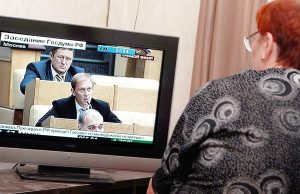- November 16, 2012
- 276
Digital and analog TV do not provide too much Polish television

The process of digitalising the TV signal has divided the Lithuanian market of television services. While big TV channels lose their viewers, small, local and niche ones are becoming more popular, though until now their only way of reaching viewers was cable TV.
Cable TV operators cannot complain, because since on 29 October the analog TV signal on Lithuania was turned off, they gain new customers.
—Digitalisation of the TV signal caused an increased interest in cable TV’s services and cable TV companies have been gaining customers— says in her conversation with “Kurier” Vaiva Žukienė, the chairman of the Lithuanian Association of Cable Television (LZTK) and the manager of „Rygveda” company, which is one of the cable TV operators. In her opinion, the cause of increased interest in cable TV is the financial situation of the society, which is not the best.
—Obviously, not everyone can afford new equipment that allows receiving the digital signal, so people choose cable TV and a sign of bad financial situation is the fact that most of customers choose the cheapest set of channels, in which Lithuanian ones dominate— says Žukienė. She also explains that cable TV providers worked on inviting the customers disconnected from analog TV to choose their services.
—There were fears among customers that they would not have the access to their favourite programmes because of lack of information. It was especially so in case of those who do not know Lithuanian language very well. Therefore, for more than half a year, together with the Ministry of Communication, we have been managing an active informative campaign. And it also contributed to the fact that customers choose our services— points our LZTK’s chairman.
Old and new customers of cable TV have a wide choice of options— starting with the simplest ones with several channels up to those with a few hundreds of channels (including coded ones). Among these, there are German and French language channels, but English and Russian ones dominate. Is it so because they are cheap?— we ask the chairman.
—Certainly not — she says.— Russian language channels generally do not belong to the cheap ones. We provide them, because there is demand. We know that from our own research and from one done by an independent agency of monitoring public opinion. After all, the English language, as well as Russian, is the languages known by the majority of the Lithuanian society. The evident lack of Polish programmes (Polish minority in Vilnius makes up about 20% of the citizens and the majority in the areas near the city) in the Lithuanian TV providers’ offer is simply caused by the market— says Žukienė.
—We know the problem. But unfortunately, it lies on the Polish side, because Polish most popular channels usually limit the broadcast to inner market and they have no license to sell the services abroad. Exceptions are TV Polonia, TV Kultura and a few other ones, which are in our offer — explains Žukienė. She notices that the Polish side knows the problem.—And the problem is not that Lithuanian providers do not want to buy Polish channels, but that the Poles do not want to sell the channels abroad. — explains clearly LZTK’s chairman. She adds that Lithuanian customers are not much interested in Polish offer.
—Usually elderly people ask for TV Polonia or other Polish channels. The younger generation is not interested in them.—points out Žukienė.
From our data it seems that Lithuanian Poles do have a choice in Polish channels, even if they are not interested in them. The basic, cheapest options of cable TV services usually have TV Polonia and Tele 5. The offers of those channels will not charm viewers with the newest movies or popular shows, but the news offer of Polonia and movie offer of Tele 5, which is quite up-to-date, look decent in comparison with many other channels, Russian language ones, for instance.
Paying more, a Polish viewer in Lithuania will not gain more. As we have established, the most expensive options of TV providers do offer more Polish and Polish language channels but the majority of those are either niche ones or linguistic adaptations of popular global channels. So, by paying a few dozen litas for a “max” option, a viewer from Šalčininkai, apart from TV Polinia, Historia (History) and Tele 5, will receive a niche Polish production— TVP Kultura (Culture)— or Polish version of global channels: Viasat Explorer, Viasat History, Nat Geo Wild and Travel Chanel. Sports lovers may console themselves by watching old matches on ESPN Clasik, and Bloomberg Europe will inform us about world news in Polish, but they won’t’ say much about Poland.
Source: http://kurierwilenski.lt/2012/11/16/i-cyfrowa-i-kablowa-skape-na-polska-telewizje/
Tłumaczenie Emilia Zawieracz w ramach praktyk w Europejskiej Fundacji Praw Człowieka, www.efhr.eu. Translated by Emilia Zawieracz the framework of a traineeship programme of the European Foundation of Human Rights, www.efhr.eu.

